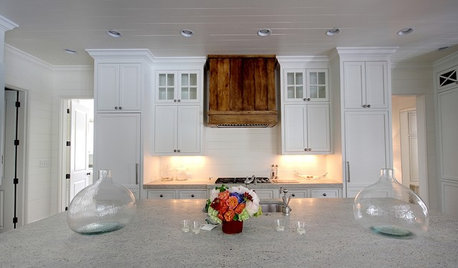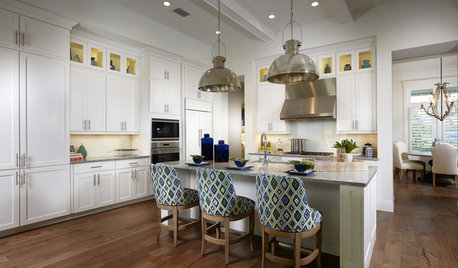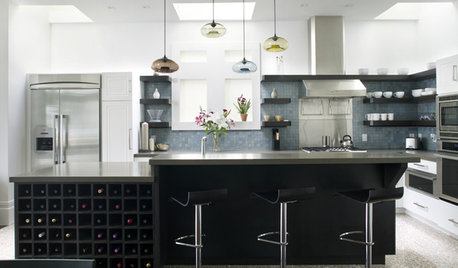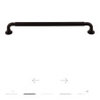advice on vent hoods
LE
12 years ago
Related Stories

REMODELING GUIDESContractor Tips: Advice for Laundry Room Design
Thinking ahead when installing or moving a washer and dryer can prevent frustration and damage down the road
Full Story
KITCHEN DESIGNSmart Investments in Kitchen Cabinetry — a Realtor's Advice
Get expert info on what cabinet features are worth the money, for both you and potential buyers of your home
Full Story
KITCHEN DESIGNA Cook’s 6 Tips for Buying Kitchen Appliances
An avid home chef answers tricky questions about choosing the right oven, stovetop, vent hood and more
Full Story
KITCHEN DESIGNHow to Choose the Right Hood Fan for Your Kitchen
Keep your kitchen clean and your home's air fresh by understanding all the options for ventilating via a hood fan
Full Story
KITCHEN APPLIANCESThe Many Ways to Get Creative With Kitchen Hoods
Distinctive hood designs — in reclaimed barn wood, zinc, copper and more — are transforming the look of kitchens
Full Story
KITCHEN APPLIANCESWhat to Consider When Adding a Range Hood
Get to know the types, styles and why you may want to skip a hood altogether
Full Story
KITCHEN DESIGNWood Range Hoods Naturally Fit Kitchen Style
Bring warmth and beauty into the heart of your home with a range hood crafted from nature's bounty
Full Story
SHOP HOUZZShop Houzz: Large Kitchen Appliance Sale
Save up to 25% on modern ovens, ranges, cooktops, hoods, vents and more
Full Story0

5 Stunning Modern Range Hoods
Today's kitchen range hoods can look like sleek sculptures. Here's what to look for when you go shopping for one
Full StorySponsored
Most Skilled Home Improvement Specialists in Franklin County
More Discussions









a2gemini
LEOriginal Author
Related Professionals
Carson Kitchen & Bathroom Designers · Newington Kitchen & Bathroom Designers · Calverton Kitchen & Bathroom Remodelers · Dearborn Kitchen & Bathroom Remodelers · Kettering Kitchen & Bathroom Remodelers · Panama City Kitchen & Bathroom Remodelers · Republic Kitchen & Bathroom Remodelers · Toms River Kitchen & Bathroom Remodelers · Burr Ridge Cabinets & Cabinetry · Farmers Branch Cabinets & Cabinetry · Hammond Cabinets & Cabinetry · Potomac Cabinets & Cabinetry · Tooele Cabinets & Cabinetry · Whitney Cabinets & Cabinetry · Liberty Township Cabinets & Cabinetrykaseki
LEOriginal Author
weedmeister
LEOriginal Author
kaseki
attofarad
a2gemini
LEOriginal Author
LEOriginal Author
sudaki
LEOriginal Author
attofarad
weedmeister
LEOriginal Author